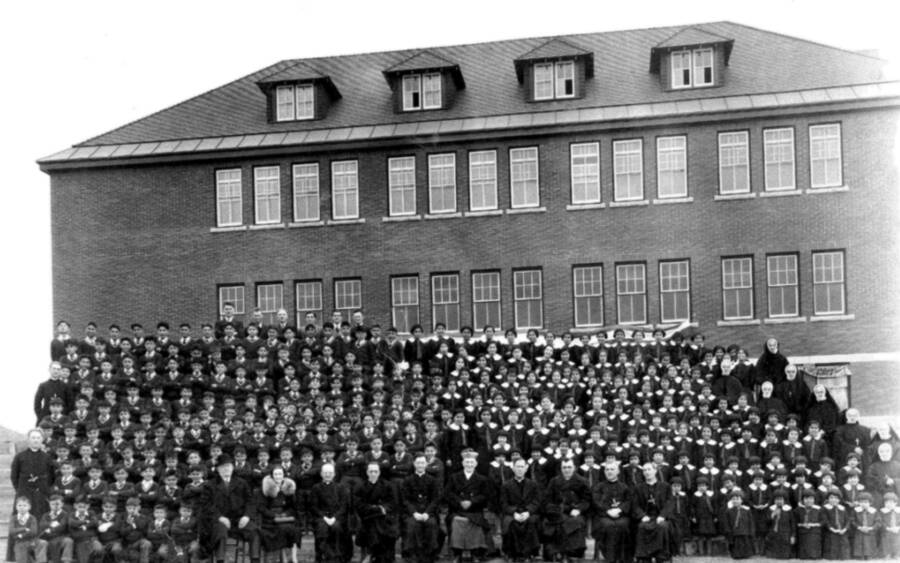With scores of human remains recently unearthed, Canada and the U.S. are beginning to come to terms with the atrocities committed at boarding schools for Indigenous children in the 19th and 20th centuries.
In the summer of 2021, Indigenous people across Canada started visiting the sites of former Indian Residential Schools. With ground-penetrating radar devices in hand, they slowly swept the earth, hoping to confirm a long-held rumor about the untold numbers of Indigenous children who had vanished while enrolled in these facilities.
Sure enough, the radar exposed what they had long suspected and feared: the grounds of former Indian Residential Schools — like Kamloops in British Columbia and Marieval in Saskatchewan — contained hundreds upon hundreds of bones of children who’d been forced into the schools between 1883 and 1996 so that their their Native language, culture, and traditions could be stamped out.
For decades, many families were told that missing children had simply run away. But as one of the searchers said at the time of the Kamloops discovery, “We had a knowing in our community that we were able to verify. At this time, we have more questions than answers.”

Archdiocese of VancouverChildren at the Kamloops Indian Residential School in 1937.
Although recent discoveries in Canada have forced a political reckoning there, the United States is just beginning to grapple with its own history of residential schools. Starting in the 19th century, the U.S. opened hundreds of schools with the mission to “Kill the Indian, Save the Man.”
By 1925, 60,000 children, or about 83 percent of all Native American children, were enrolled in boarding schools. At the peak, the United States had 367 indigenous boarding schools across 29 states.
But Native American students — and their families — didn’t have a choice in the matter. If tribes refused to offer up their children, Indian agents often threatened to withhold rations of food. Sometimes, these agents called in the police to physically seize children from their parents. It wasn’t until 1978 that the Indian Child Welfare Act declared that Native American parents could refuse to place their children in off-reservation schools.
Until then, thousands of Native American children were forced into boarding schools. Upon arrival, they were swiftly severed from their culture — and everything they’d ever known. Their long hair was cut. Their traditional clothing was taken and replaced with a uniform. Even their names were snatched away. The children were given “white” names instead.
From there, any hint of their former life was severely suppressed. And the fates of many of the countless children who passed through American boarding schools remains uncertain.
Dig deeper into the dark history of Indigenous boarding schools.
Learn more about the music used in our podcast. History Uncovered is part of the Airwave Media network. Learn more about your ad choices by visiting megaphone.fm/adchoices.






